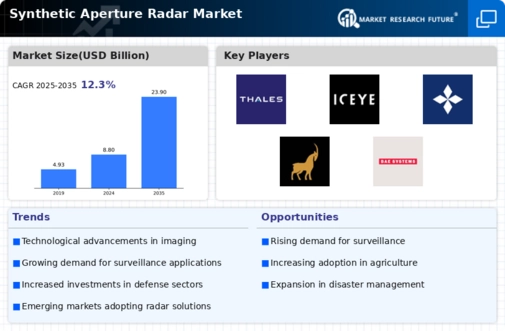Synthetic Aperture Radar Market Summary
As per Market Research Future Analysis, the Synthetic Aperture Radar (SAR) market is poised for significant growth, projected to reach USD 13.4 billion by 2030, with a CAGR of 12.3% from 2024 to 2032. The technology is essential for creating high-resolution images and 3D reconstructions, primarily utilized in military applications for surveillance and reconnaissance. The COVID-19 pandemic temporarily hampered R&D and military investments, but demand is expected to rebound as production resumes. Key drivers include the increasing need for environmental awareness and effective surveillance systems, while high development costs remain a restraint. The market is segmented by component, platform, frequency band, application, and mode, with North America leading in technological advancements and military spending.
Key Market Trends & Highlights
The Synthetic Aperture Radar market is characterized by several key trends and opportunities.
- Market expected to reach USD 13.4 billion by 2030; CAGR of 12.3% from 2024 to 2032.
- Rising demand from military applications for precision targeting and surveillance.
- Development of dual-band SARs and miniaturization for UAVs driving market growth.
- North America holds the largest market share, supported by significant defense budgets.
Market Size & Forecast
| Market Size | USD 13.4 Billion by 2030 |
| CAGR | 12.3% (2024-2032) |
| Largest Regional Market | North America |
Major Players
Key players include Lockheed Martin Corporation, Northrop Grumman Corporation, Raytheon Company, Thales Group, and BAE Systems.






